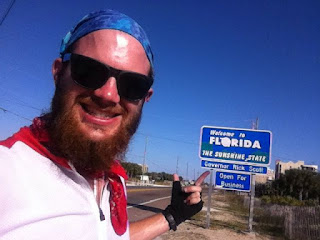WHO estimated that in 2015 nearly 3.2 billion people or about half the world’s population were at risk of malaria across 97 countries and territories. Though the majority of these cases and deaths occur in sub-Saharan Africa those in Asia, Latin America and even the Middle East are at risk.
It is estimated that there were 214 million cases of malaria and 438,000 deaths. It’s not all bad news though as since 2001 it is estimated that 6.2 million lives have been saved. Furthermore between 2000 and 2015, malaria mortality rates among populations at risk has decreased by 60% with the incidence among populations at risk falling by 37% globally.
So just what is Malaria? It is a a preventable and curable disease caused by parasites spread through bites from infected female mosquitoes. Those most vulnerable are young children, pregnant women and non-immune travellers from malaria free areas.
Symptoms
Initial symptoms include fever, headache chills and vomiting which can make it hard to diagnose and recognise as malaria especially given symptoms usually occur 10-15 days after being bitten In severe cases multi organ involvement is frequent. For those who live in malaria endemic areas they may have developed partial immunity allowing asymptomatic infections to occur
Treatment
As with most diseases, early diagnosis and treatment is the aim to reducing further spread and mortality. Unfortunately like TB, resistance to antimalarials is one of the challenges to effective treatment. Fortunately at this time anti-malarial drug resistance is geographically isolated in the Greater Mekong Subregion (Cambodia, Laos, Myanmar, Thailand and Vietnam. As such additional support is being provided to strengthen the prevention, diagnosis and treatment of malaria in this region.
 |
| Source: WHO World Malaria Report 2015 |
Prevention
- WHO recommends the following vector controls:
- Insecticide Treated Mosquito Nets
- Indoor Residual Spraying
- Use of antimalarial medicines for travellers, pregnant women and children living in malaria prone areas
Clinical trials of the most malaria vaccine (RTS, S/AS01) is underway and shows promising results. The vaccine was developed as a partnership between GSK (GlaxoSmithKline Biologicals) and MVI (PATH Malaria Vaccine Initiative) with support of the Bill and Melinda Gates Foundation as well as network of African research centre.
RTS, S/AS01 works against the most deadly form of malaria which also happens to be the most prevalent in Africa. It is being used alongside other more established preventative techniques given that additional trials and registration/testing is still underway.
Research and development of other malaria vaccines is also underway though are not as far advanced nor show as much promise as RTS, S/AS01.
It is noted that there are no licensed vaccines against malaria or any other human parasite.
The World Health Assembly adopted an ambitious but achievable strategy in 2015 by 2030
- Reducing by at least 90% the rate of new malaria cases
- Reducing the death rates of malaria by 90%
- Elimination of malaria in at least 35 countries
- Ensuring that malaria-free countries remain that way
Unfortunately it is estimated that to reach these goals the spending for malaria treatment and prevention needs to triple over the next 15 years to US$8.7 billion by 2030.
One can donate to help end Malaria:
The Global Fund
Disclaimer: The opinions expressed within this article are the personal opinions of the author. The facts and opinions appearing in the article do not reflect the views of AarogyaSeva and AarogyaSeva does not assume any responsibility or liability for the same.
To get in touch with the author or to join our team write to us at – Volunteer@aarogyaseva.org















